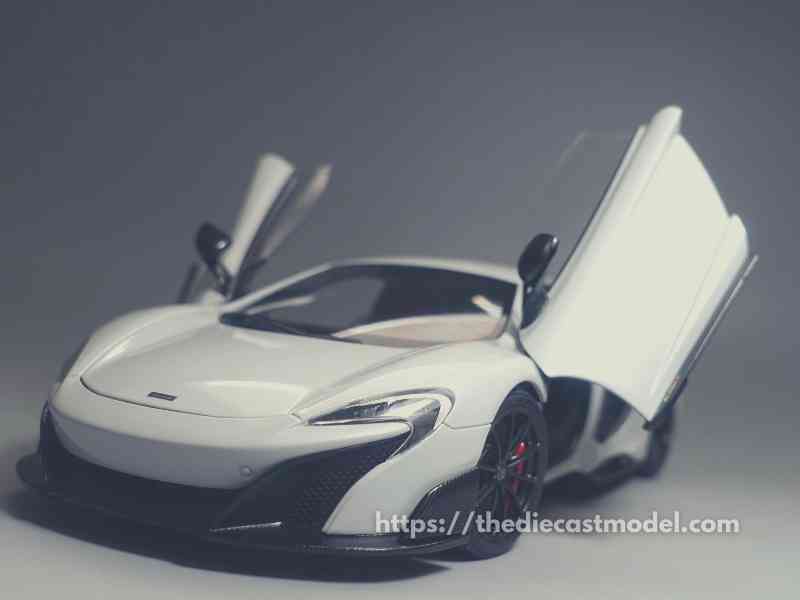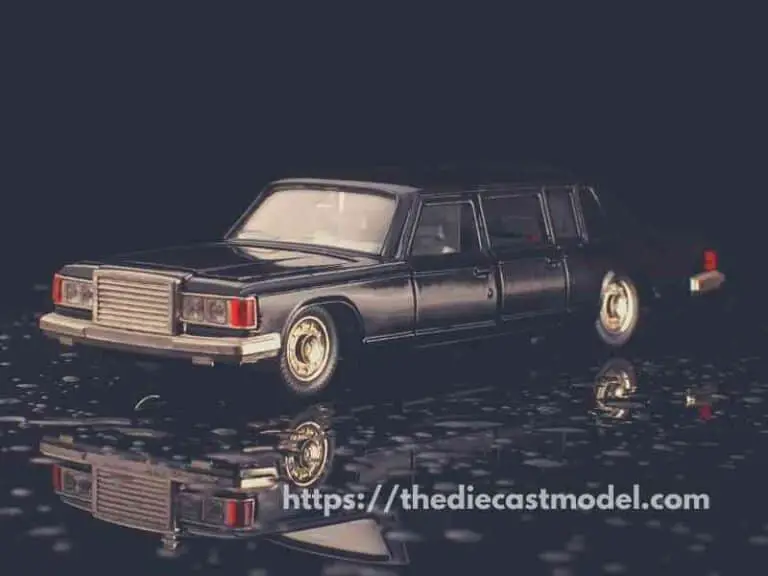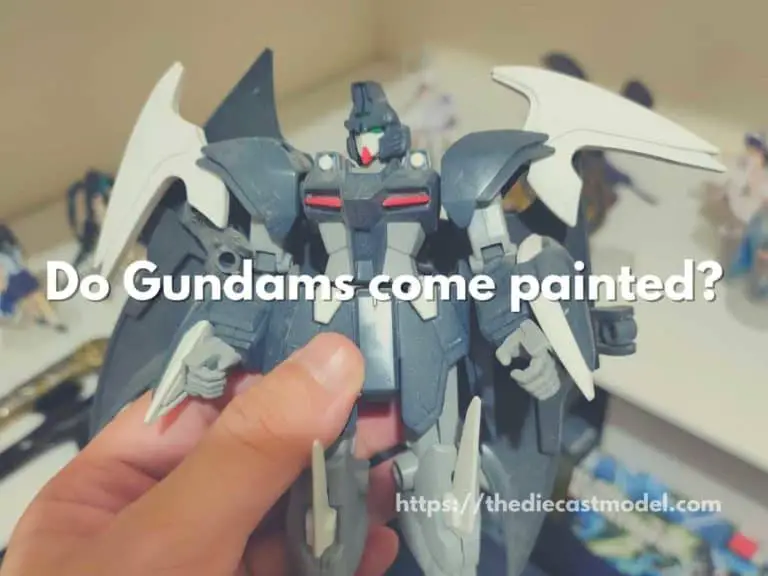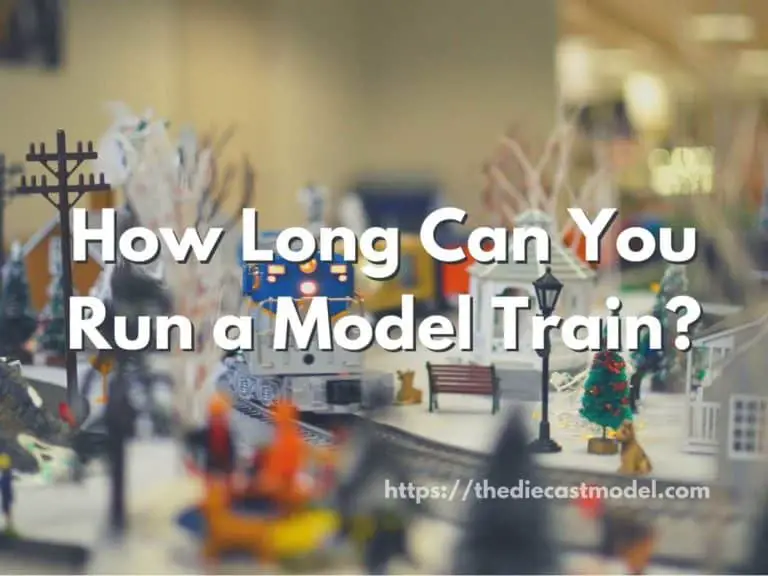AUTOart Composite: What Exactly is it?
One of the model brands that made its name for its quality is AUTOart. It is one of the companies that introduced a newer system of diecasting which is the ABS composite system. It is significantly different from the traditional zinc diecasting which the majority are familiar with. But what exactly is AUTOart composite? Let’s find out.
AUTOArt composite is a method of production made by AutoArt in order to reduce its labor cost. Not only does it able to reduce labor cost, but it has also produced quality models with finer details and supreme finish. Furthermore, their ABS composites are very realistic since even real cars use this type of material.
This blog will discuss AUTOart composite, why AUTOart switched its manufacturing process, and how good AUTOart models have become since then. We will also compare AutoArt with traditional diecasting and the newer Resin diecasting technique. This is an exciting topic since we will dive into the production process of diecast models.

What is AUTOart composite?
AUTOart Composite provides superior detail to models by injecting Acrylonitrile Butadiene Styrene, also known as ABD. This polymer is a blend of numerous materials allowing the production of higher quality models than traditional zinc diecasting techniques.
AUTOart is a Hong Kong-based model car line sold by AA Collection Ltd, which was previously owned by Gateway Global Ltd., California.
AUTOart was founded in 1998 and started its journey as a diecast car model brand.
AUTOart has introduced a new concept for the production of fine-scale model cars made from composite.
Their composite models are intricately designed replicas made from a blend of different materials that have been chosen and engineered to produce both the supreme finish detail and high value that collectors demand.
Die-cast model production has become prohibitively expensive due to a ten-fold increase in labor costs over the past two decades.
As a result, even diehard collectors are abandoning the hobby because they can no longer afford it. At such a time, AUTOart came up with its latest innovation—the composite model.
In their composite models, AUTOart combines a diecast interior with a newly developed injection of Acrylonitrile butadiene styrene (ABS), a thermoplastic polymer with a unique blend of different materials for body reinforcement.
As a result, it is maximizing the benefits of both materials to produce the highest quality models the company has ever made.
How does the Composite model provide good models?
Composite models provide good models and detail because it applies the injection-molded ABS technology which is not just as durable as metal diecasts, but also provides finer details. Furthermore, it prevents imperfections such as bubbles in the casting process because of its unique injection system.
The new injected ABS composites have proven to be an excellent material for modeling car bodies.
Compared to a diecast zinc metal body, injected ABS composite material surfaces with the proper formulation are smoother and have sharper bodylines and creases.
Openings for vents and holes are also more cleanly reproduced, and panels can be much thinner when rendered in ABS composite material rather than zinc alloy.
As a result, the finished body is more accurate to the actual scale gauge of real car bodies.
While other brands adopted the newer Resin diecast which I personally like, AutoArt made their own by introducing composite models.
Both are good at producing highly detailed models compared to the traditional diecasting technique.
If you are interested in knowing what is the difference between the Resin Diecasting technique which is now being used by Spark, Maisto, and other brands, you may check this blog post I’ve made: Resin vs Traditional Diecasting Technique
For now, let’s continue to the ABS composite that is quite unique to AutoArt. We will talk about the comparison between Resin and AutoArt Composite later.
AUTOart’s transition to a composite model coincides with the increased use of injection-molded ABS composite parts in the production of modern full-scale cars.
Bumpers, fenders, tailgates, and body panels are now routinely made of ABS with varying compositions.
They are as durable as their metal counterparts, if not more, in terms of esthetic and structural rigidity.
Furthermore, ABS components will never corrode.
Even the chrome-plated trim pieces found on modern car interiors, such as door handles that are constantly pulled, are made of ABS to simulate metal parts.
In modern supercar manufacturing, composite bodies and structures are also becoming mainstream, and structural rigidity is even better than sheet metal.
Though some model manufacturers have turned to resin to replace diecast metal for the body, ABS with proper reinforcement material blending has way more advantages than resin, particularly in reproducing fine details.
Resin and ABS are byproducts of crude oil, but resin models can be fragile, easily breaking, or deforming if not handled with care.
This is because resin does not flex like ABS and is not as rigid as a diecast body.
Due to these flaws, resin models are typically made as closed bodies with no openings.
That’s why when the manufacturers had to make some parts of the body, including the doors and bonnets which include openings, ABS is a lot more preferred than resin.
Because of this, some recent resin models with opening doors and bonnets demanded a very high price.
Resin is brittle and easily breaks; that is why it’s impossible to install the small hinges required for movable panels without risking resin failure after only a few openings and closings.
The common problem of trapped air bubbles on a diecast metal body’s paint surface, due to trapped air during the casting process, is hardly a problem when ABS composite is used instead of zinc.
ABS doesn’t trap hot gases as easily as zinc during the injection process, which reduces the defect and scrap rate of painted bodies.
That is also why when I made a survey on a collector’s group with 24 thousand members, the number one brand they voted for is AutoArt. The reason is that when it comes to details and price, they are just really good.
If you are interested in my survey where I ranked the different diecast brands, then here is the blog post: Which are the best diecast brands?
Are AUTOart models good?
AUTOart models are extremely good when it comes to attention to detail. Their method of production is very realistic in that it is comparable to producing real cars. Furthermore, even small details that some overlook such as rivets and spoilers are well detailed in an AutoArt model.
AUTOart is a true artist when it comes to automobile models.
AUTOart models are incredibly detailed and intricate.
Nothing is overlooked, from the red tow hooks to the rivets on the spoiler attachments.
The price of AUTOart 1:18 models varies, but most of them start at around $129 and are well worth it.
In recent years, AUTOart’s costs have risen, and for a good reason.
Models from AUTOart’s composite line are not sealed, but they have a range of working closure panels—doors on all models and engine bonnets on many subjects.
Like a real car, the mesh on the motorsport kit is distinct and notably softer than the body. Every component of the kit feels distinct (lug bolt, exhaust, spoiler, etc.), which is a testimony to the original mold.
Although that doesn’t mean that they don’t have any challenges in their production.
Opening doors and bonnets crafted on a composite model have been challenging for AUTOart’s engineers because an ABS body, even when reinforced, is generally not rigid enough.
It flexes and deforms when twisted or compressed.
If such a model has opening doors, they will pop loose when flexed and won’t close properly once the body is slightly deformed.
To make the entire composite body rigid enough, AUTOart pairs it with a diecast interior designed to support the body in all areas that require reinforcement.
The whole composite body becomes rigid with a metal interior, which is similar to the concept behind a diecast metal body and even many real cars.
The reinforced composite body will not flex or deform, and the doors and bonnets will always open and close in the same position.
In addition, when rendered in composite material, the finished model’s door gaps are finer than when rendered in diecast zinc.
However, most collectors cannot tell that the body is made of composite material until they examine the body lines and creases that are even sharper and just as focused as those on resin models that sell for much higher prices when compared to older diecast zinc replicas.
Where are AUTOart Models Made?
AUTOart models are made in Mainland China. Although AutoArt’s main headquarters is situated in Hong Kong, the cost of labor in Hong Kong is too much forcing them to move their production line to China. This made their models cheaper while maintaining quality.
As with the majority of model brands, their headquarter location is different from their production line.
This is because they are trying to reduce labor costs as labor costs over the past two decades have been rising significantly.
Because of that, they’ve transferred their production to Mainland China.
But that doesn’t mean that they reduced their quality.
In fact, they maintained their ABS Composite method of production while reducing cost making their product come with a cheaper price.
So their models made in China is not really a big deal if you think about it. It benefited us in some way because we can buy their high quality models at a cheaper price.

“Only the things I love”
thediecastmodel.com is reader-supported. When you buy through links on the site, I earn an affiliate commission.
So, here are the things I love when taking care of my Diecast Models.
Cleaning the Models
The first we are going to talk about is cleaning the models.
Removing Dust
- Air Brush – For me, this is the best since it not just removes dust but you can use it in painting/clear coating.
- Air Duster – This is a good alternative to Airbrush
- Normal Brush – If you are short on budget, you can use a normal brush. However, make sure that the brush has soft bristles because there are some hard brushes than can cause scratches. That’s why I recommended a good brush that can do the job properly.
Cleaning and Shining Hacks
Well, here are some of my cleaning hacks for removing scratches, oxidation, and so much more.
- Removing Decal Adhesive – Use Goo Gone on those hard-to-remove decal adhesives. It works fast and works like charm!
- Waxing and Polishing – Here is something a lot of people don’t know. Waxing protects the clear coat and paint while polishing shines the model. Instead of buying it separately, use a 2 in 1 to save money. Get this instead.
- Beginner Wax – The wax I recommended earlier is good and provides the best results based on my experience. But a beginner might have a problem especially if they’re not good at applying wax. Solid wax reaching hard to reach surface can be hard to remove. You have two choices here. One is to use a qtips to reach those surfaces, another is to use a liquid wax I recommended.
- Cleaning Wheels, Rubber, Plastic – Do not forget that rubber and plastic surface are quite different, especially in the cleaning process. Just wiping it down won’t do the job. That’s why I use Meguiar’s Vinyl and Rubber Cleaner and Conditioner. Works like charm!
- Make the Wheels Shine! – Making our models look good won’t be complete without tiny details such as shiny wheels! Do not forget this because however small this is, the difference can be as big as night and day.
- Remove Scratches Easily – Tiny scratches are not the end for your model. Here is a simple trick I’ve been using to make my models look scratch-free even without repainting. Use T-Cut.
Painting the Models
Painting Tools
Make sure when you paint models, have these ready.
- Tape – A tape is important if you are painting a straight line. Furthermore, it will prevent your paint to scatter on other parts. I recommend Tamiya Tape since it is really made for models. Furthermore, they stick really well preventing paint splatters.
- Brush (Beginner) – Find a good set of brushes to paint your models. Of course, you can opt for an airbrush but it’s quite expensive.
- Airbrush (Intermediate/Expert) – This will yield a significantly better result than an ordinary brush because you can easily spray the paint evenly. I recommend this if you know what you’re doing.
- Stand(Optional) – Stands are good because it can be hard to manually hold the models while painting. It is optional but in my opinion, the price is well worth it for the comfort it gives.
- Drop Cloths – Drop Cloths will protect your surroundings from the paint.
- Primer – The most common beginner mistake I see is painting models without any Primer. A primer will prevent imperfections such as bubbles or paint not sticking to your models. It is a small price to pay for quality results.
- Clear Coat – A clear coat will protect the paint of your models. This will make the paint last longer. Also, it is the one responsible for making your models shine.
Paints
Of course, you can’t do painting properly without paint. So here are the ones I recommend.
- Acrylic Paint – Good for beginners because it dries quickly. However, it doesn’t produce results as good as enamel paint.
- Enamel Paint – Provides a good quality finish and longer-lasting paint. However, it takes longer to dry and requires expertise to use.
Model Maintenance
Model Storage
- Simple Wood Cabinet – While it doesn’t let you display your models, wooden cabinets are good storage for these models. For one, they are not heat conductors which means that the temperature inside will remain constant and remain cool. Furthermore, they prevent light from reaching the models which can cause oxidation.
- Clear Cabinet with Lock – If you want to display your models, then I recommend this. It closes so dust won’t easily get to your models. I also recommend you don’t put more than 1 model in each compartment since metals are good conductors of heat.
Model Photography
So you want to show off your models to others? Well, I got you covered.
Here is my beginner-friendly model photography tutorial that teaches everything from taking pictures to the editing process.
You will also see me doing hands-on photography in that tutorial.
Here is the link: How to Take Pictures of a Diecast Model or Model Kit | Helpful Illustrated and Video Guide
Sources







